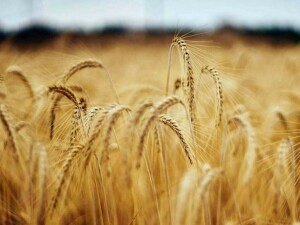In the world where technological advancements and scientific breakthroughs are pushing the boundaries of perceived limits, hunger - the very basic of human subjects - remains a persistent challenge, presenting a glaring paradox to the remarkable strides in other domains.
As many as 828 million people around the world, i.e. 10 percent of the world’s population, goes to bed hungry each night. This marks every tenth person in the world food insecure, with the number getting worse by the day.
According to the World Health Organization, 122 million more people have been added to the list of food insecure since 2019, 46 million of them being added over the past year alone. The 2023 edition of Global Report on Food Crisis also emulates similar trajectory, depicting a consistent increment in the number of people experiencing acute food shortages, endangering their lives, for the fourth year in a row?
Regrettably, the situation of food security in Pakistan mirrors the global trend of worsening food crisis. According to Global Hunger Index (GHI), the state has shown a persistent decline in food security over the last two decades, going down from a score of 36.8 in 2000 to 26.1 in 2022.
The figures from World Food Programme, depicting 36.9 percent food insecurity (18.3% of them facing severe food crisis), paint an equally concerning picture. Food inflation due to non-indigenous and limited market availability of the products remains a pervasive issue amid rising food insecurity.
While the state possesses a vast area of uncultivated land, it has been essentially unable to tap into its agricultural potential to fulfill the much-needed agricultural demand, the reason being conflation of shrinking agricultural land due to climate change, increasing population and labour shift from rural to urban areas.
Estimates show a potential of $200 billion vis-a-vis the current output of $70 billion being generated in the agricultural sector, which could not only feed its own people but also add to the state exchequer through the much demanded agricultural exports.
Despite immense potential, the country expends its limited foreign exchange on importing approximately $10 billion worth agricultural products including cotton, wheat, sugar, edible oil, milk powder, and pulses.
In cognizance of this issue, a number of initiatives have been launched to bring in public-private cooperation in the agricultural sector. In a current bid to tackle the issue of decrement of agricultural land & productivity and the concomitant food insecurity, the government of Pakistan set up the Special Investment Facilitation Council (SIFC) to attract substantial investments from the Gulf Cooperation Council (GCC) and local investors into the state’s agriculture sector.
The council broadly aims at the enhancement of agricultural production, leading to job creation, increased exports, and additional tax revenues. The initiative has begun to yield results, with the sector experiencing a remarkable 73% growth rate in October.
SIFC’s Green Pakistan Initiative (GPI) is another project, furthering similar programmes in agricultural sector. The initiative focuses on the elements vital to the agricultural sector, including water preservation, sustainable farming, and research & development.
This project will provide a significant benefit, especially to small farmers nationwide. The project is in line with the government’s efforts to attract foreign investment, intending to establish a favourable environment for sustainable growth and economic prosperity within the agricultural sector.
In addition, the Land Information and Management System, Center of Excellence (LIMS-CoE) has been established to advance modern agro-farming by utilizing over 9 million hectares of the state uncultivated land.
The facility was launched with the initial investment of $500 million from Saudi Arabia. The initiative is estimated to attract an investment worth $30-50 billion over the next three to four years. As part of LIMS-CoE, the state’s first corporate farm has been inaugurated, aiming at the modernization of agricultural practices to increase productivity and convert the barren land into fertile ground for cultivation.
The government has also made a substantial move to tackle the rising need for home-grown crops under the ‘Crop Enhancement Programme’, by offering extensive training to more than 460,000 wheat farmers in vital crop-producing regions. The programme is aimed at the enhancement of yield per acre of wheat and fulfil the expanding domestic market’s demands.
Though Pakistan has a long way to go in its achievement of ‘zero-hunger’ goals, both civil and military’s cognizance of the importance to address the issue and its initiatives, such as the Special Investment Facilitation Council (SIFC), Green Pakistan Initiative, LIMS-CoE and other strategic agricultural programs demonstrate a commitment to addressing food insecurity.
The effective success of this endeavour hinges upon the collaborative partnerships between public and private sectors, underscored by a dedicated commitment to sustainable practices and technology-driven innovations. This collective effort stands as the imperative need of the hour, poised to redefine Pakistan’s agricultural sector to effectively combat the pressing challenges of food scarcity.
(The writer can be contacted on taimoormustafamakwal3@gmail.com)
Copyright Business Recorder, 2023
The writer can be contacted on taimoormustafamakwal3@gmail.com























Comments
Comments are closed.